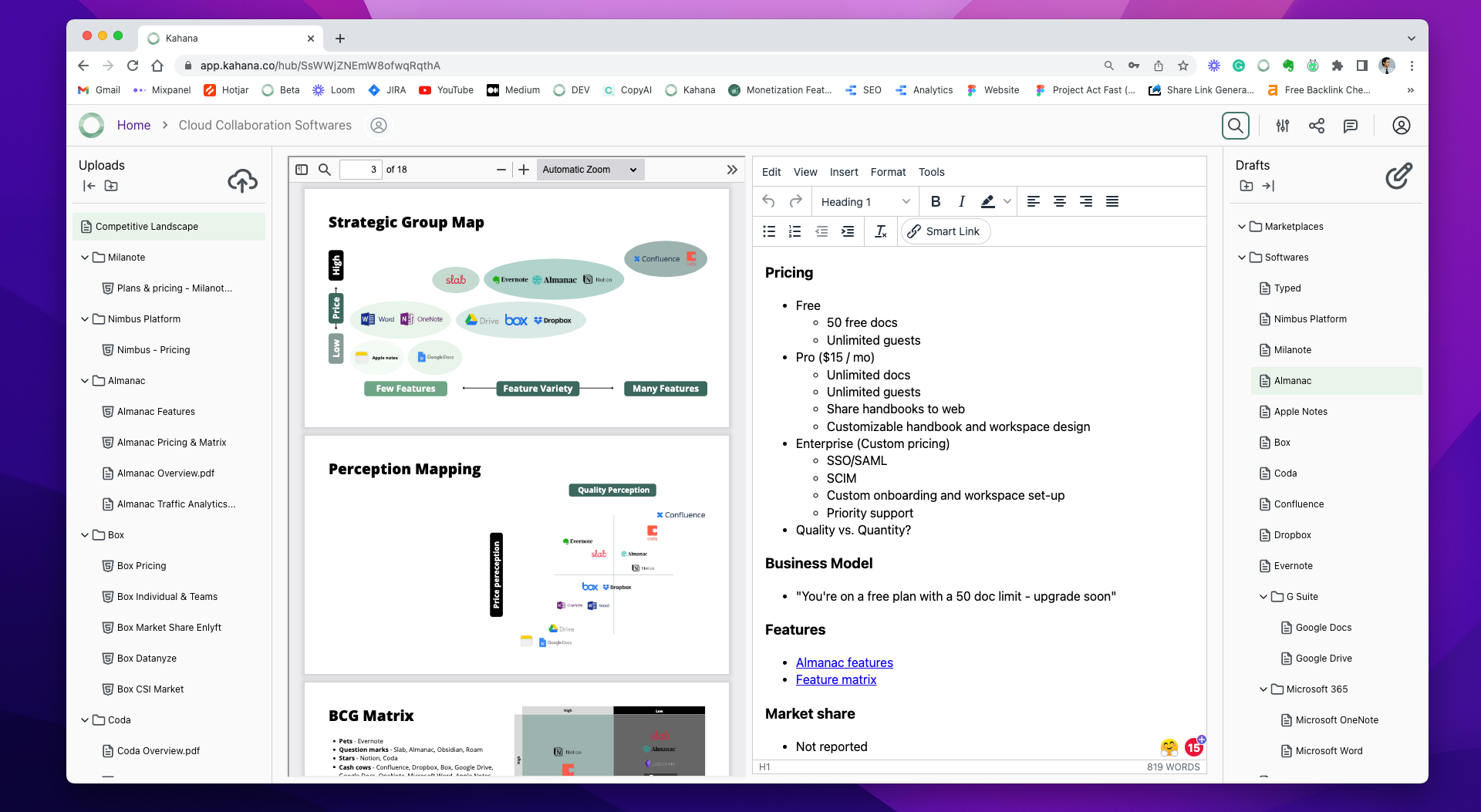Brand Perception Research: 13 Key Considerations [templates]

Topics covered ✅
- Brand perception theory
- Brand perception example
- Brand perception survey
- Brand perception questionnaire
- Brand perception scale
Why is brand perception research important?
Positive brand perceptions lead to more customers and more revenue but beware of the negative brand perceptions that could tank your business if you don't act quickly.
Brand perception research can:
- Help us attract new customers, keep existing ones, and generate revenue.
- Help us tailor our marketing communications and product development efforts to reach these customers.
- Help you understand your brand's position in the market, relative to any competitors.
Among other things, this allows you to:
- Establish a baseline to monitor changes in perception over time.
- Track and quantify marketing performance in order to see if investments are effective across multiple KPIs.
In this article, we’ll take a deep dive and cover the most important aspects of brand perception research.

Claim Free Brand Research Template
This hub is ready-made and comes pre-populated with questions, tools, and examples to help you improve your brand research.
1. Defining Brand Perception
Brand perception is defined as a collection of all the articles of information as well as digital and physical touchpoints, that formulate the way your customers think about you, including both the positive and negative aspects.
Since the goal of any brand-building campaign is to build trust and develop credibility around your product or service, you need to identify what defines a positive perception in the minds of your customers and then work diligently to gather insights, conduct segmentation research, and improve rapidly for each customer segment.
This can be done through brand perception research; in particular, conducting a perception study, which can help us determine people's opinions of our brand.
2. Market Research
You should conduct different types of market research before launching any marketing campaign, as it will help you create messaging that resonates with customers and helps them understand why they need your product or service.
You can also use it to identify problems with the way you present yourself and your brand, which helps you improve on them before you launch your campaign into the marketplace.
If you're unsure about conducting market research, think again.
Here are 4 successful companies that depend on their market research methods to get the most customers and have a competitive advantage.
- Starbucks: Starbucks Coffee became the largest coffeehouse chain in the world because of its market research approach, which includes gathering customer feedback through its My Starbucks Idea platform. This allows customers and employees to share their creative ideas.
- Apple Inc.: To succeed as one of the biggest technology companies in the world, Apple uses market research to understand its customers' needs through online customer surveys. In addition, Apple has a research panel called the "Apple Customer Pulse," which honors the needs of technology consumers by analyzing data.
- McDonald's: As one of the biggest fast-food chains in the world, McDonald's relies on market research by studying the products that are performing well, the most affordable prices for customers, the ads that the customers are reading and watching the most, and the restaurants with the highest attendance. Based on their findings, McDonald's adjusts its marketing strategy to improve its relationship with customers.
- The LEGO Group: LEGO uses market research to improve inclusivity for boys and girls. LEGO did a market research study to see how it could expand its audience from just boys to all children. As a result of the study, LEGO launched "Friends," a new line of toys that girls would want to play with.
3. Identifying Target Markets
So how can you improve your brand perception?
First, you need to (clearly) identify what your target audience thinks about you and what you would like to see changed. This can be accomplished by leveraging various types of audience research tools.
Once you know this information, it's much easier to create marketing and brand awareness campaigns that truly resonate with people and drive customer loyalty among them.
4. Brands
If you're launching brands or growing them, we recommend conducting extensive brand perception research on an ongoing basis.
This will help you continuously gain valuable insight into your customers' perceptions of your company, products, and services as they evolve in real-time.
When conducting this type of research, you should be aware of online reviews.
Doing a deep dive and aggregating reviews is a requirement to get a pulse on what customers think about your brand or product.
For starters, you can find these by searching for our business name in Google Reviews or Yelp.
5. Perception Surveys
Customers can be surveyed over the phone or online about their thoughts on various aspects of your business and its products/services.
Their feedback will help you create better marketing decisions in the future to generate more revenue for your business.
6. Perception Survey Questions
If you were selling a new type of car, you might ask your customers: "When you hear about this car, what words come to mind?"
The results from these surveys can help inform future marketing decisions.
If people say they don't like something about the product or service, then it's probably not worth spending money on it in future campaigns, and is time to go back to R&D to find the solution.
However, if people say they love the product or service and can't live without it, then it's worth investing more resources.
7. Customer Survey Questions
Asking customers what they think about various aspects of your business and its products/services can be quite helpful.
You can ask questions like "How would you rate your experience with [company]?" or "Would you recommend us to a friend?"
When it comes to brand perception research, it's one thing to discover that customers understand that the products or services do what they expect them to do.
It's another thing entirely to understand how customers perceive the brand, and how you can make that holistic experience more delightful.

Claim My Free Surveys Template
This hub is ready-made and pre-populated with surveys, lists, documentation, and PDFs to help you get started.
8. Perception Studies
Perception studies are (more or less) used to gather the opinions of people who have an interest in (or relationship with) a brand.
These studies are typically conducted by an independent third party that allows analysts and investors to give anonymous feedback about your organization's products, pipeline, strategy, leadership, financial performance, investor communication efforts, plus more.
You can also choose to conduct them yourself.
The information you find from conducting a perception study can then be used to improve marketing messages, design innovative new products or services, or even change company policies if necessary.
9. Positive Brand Perceptions
There are many factors that influence a person's perception of a brand, including marketing communications, the customers' personal experience with the product or service, and the marketing campaign.
Marketing communications can help you create positive brand perceptions and build relationships with your target market.
If you want to know what your customers think about your product or service, then you should consider conducting customer surveys to find out their perceptions of your brand.
You can also create positive brand perceptions through social media posts.
Tweeting or creating an Instagram account for your brand can help you gauge how people interact with it.
Figuring out a successful method of posting on social media can increase the chances of your brand going viral and racking up positive brand perception.
10. Negative Brand Perceptions
If you want to avoid negative brand perceptions, you should tailor your brand to the environment around you.
Stay away from ideas and images that you know most of the population would also avoid.
For example, the fast food restaurant Dunkin' Donuts changed its name to "Dunkin" because of increasingly negative perceptions of donuts.
Pay attention to the current opinions of those around you so you can rebrand when necessary.
11. Customer Experience
The customer experience also plays an important role in creating positive brand perceptions because if potential customers have a positive experience when interacting with your product or service, then they will likely have positive brand perceptions about it.
Customer journey refers to how customers move through various stages along their path towards becoming loyal customers of your products or services - which is why it's important to understand how each stage affects their perceptions of your company and its products and services.
12. Brand Perception Questions
Here are some important questions to keep in mind when conducting brand reception research.
How to determine who should participate in the study:
- Who do you want to reach?
- What kind of person would benefit the most from your product or service?
How to decide what type of survey you use (if any):
- What kind of information do they need?
- Do they need facts or more emotional responses?
- How much detail do they require?
Ways to ensure that confidentiality, compliance, and privacy are maintained throughout brand perception research:
- How will the information gathered be used?
- Will it be used internally only by members of certain teams or departments within an organization, or will it be used externally and open to the public?
13. Brand Perception Research in Marketing Campaigns
Marketers can use online reviews, perception surveys, customer surveys, customer experience studies, and customer journey mapping to measure brand perception and get an idea of how their brand is perceived by customers.
Conclusion
The importance of brand perception has never been greater.
As consumers are more connected than ever, they are also more likely to share their opinions about your products or services with their friends and followers.
When a consumer sees a negative review on social media and shares it with their network, it can have a huge impact on our brand's reputation.
While this may seem obvious, it's important to note that there is no one-size-fits-all approach to managing your brand perception.
The best way to manage our brand perception will depend on who you're targeting as customers and what kind of experience you want them to have while using your product or service.
For more information about building your brand, check out our article on branding market research.

Talk with a Kahana representative
Fill out your information and a Kahana team representative will reach out to you. Have a simple question? Search our library of articles
